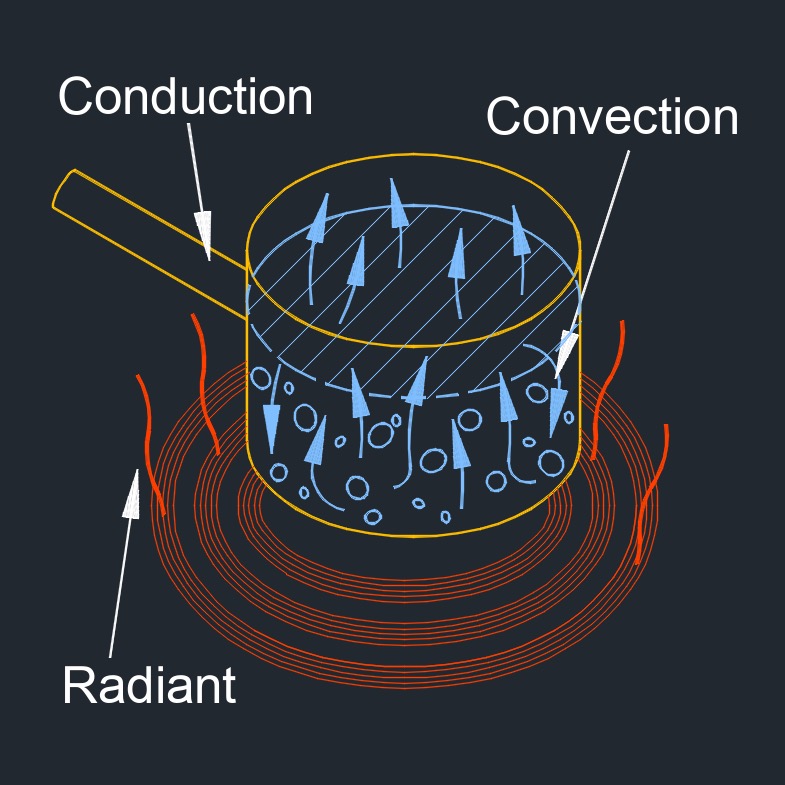Condensate Load from Heating Liquid Batch
Condensate Load from Heating Liquid Batch Formula |
||
| \( m_c \;=\; 1000 \cdot c_l \cdot SG_l \cdot V \cdot \dfrac{ T_o - T_i }{ Q_l \cdot t_h } \) | ||
| Symbol | English | Metric |
| \( m_c \) = condensate load | \(lbm\) | \(kg\) |
| \( t_h \) = heating time period | \(min\) | \(min\) |
| \( Q_l\) = steam latent heat | \(Btu \;/\; lbm\) | \(kJ \;/\; kg\) |
| \( SG_l \) = liquid specific gravity | \(dimensionless\) | \(dimensionless\) |
| \( c_l \) = liquid specific heat | \(Btu \;/\; lbm-F\) | \(kJ \;/\; kg-K\) |
| \( T_i \) = liquid inlet temperature | \(^\circ F\) | \(^\circ K\) |
| \( T_o \) = liquid outlet temperature | \(^\circ F\) | \(^\circ K\) |
| \( V \) = liquid volume | \(ft^3\) | \(m^3\) |
 Condensate load from heating a liquid batch is the amount of condensate (liquid formed from vapor) generated when steam is used to heat a batch of liquid in a process, such as in a heat exchanger or a jacketed vessel. It’s used in designing and operating heating systems, especially in industries like chemical processing, food production, or pharmaceuticals.
Condensate load from heating a liquid batch is the amount of condensate (liquid formed from vapor) generated when steam is used to heat a batch of liquid in a process, such as in a heat exchanger or a jacketed vessel. It’s used in designing and operating heating systems, especially in industries like chemical processing, food production, or pharmaceuticals.When steam is used as a heating medium, it transfers its latent heat (the energy released during condensation) to the liquid batch. As the steam condenses into water, this condensate must be accounted for to ensure proper system sizing, drainage, and efficiency. The condensate load depends on the amount of heat required to raise the temperature of the liquid batch and the steam’s latent heat of vaporization.
Condensate Load Practical Importance
Equipment Sizing - Ensures steam traps, piping, and condensate return systems can handle the volume of liquid produced.
Energy Efficiency - Helps optimize steam usage and minimize waste.
Process Control - Prevents issues like water hammer or insufficient heating due to condensate accumulation.

